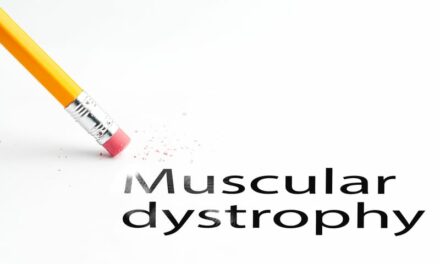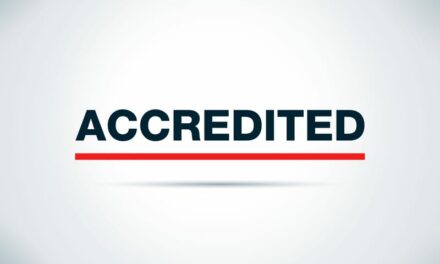 |
Greetings from the annual American Physical Therapy Association (APTA) reimbursement meeting. As reimbursement representative for the pediatric section of the APTA, I get to go to all the fun meetings. From the information I have gathered at those meetings, I will attempt to summarize the changes we must confront in the upcoming months. If you are a physical therapist (and an APTA member), you have a state reimbursement expert, as well as a section reimbursement coach and a whole team of national experts who lobby in Washington, DC, on our behalf.
The APTA Web site’s Federal Regulatory Affairs section offers guidance on how to use these resources. For more information, go to www.apta.org/AM.
Cost Savings
Physical therapists and occupational therapists are looking at an approximate 9.1% decrease in their reimbursement rates next year. Physical therapists are actually lucky, as some medical professionals are being hit by 15% decreases. You can protect yourself with pristine documentation and a system to track your billing to make sure you are getting paid for the services you supply. Still not happy? Join your professional association, hold a payor forum, and build relationships that result in better patient care and reimbursement. A prime example of a good organization is the Greater Texas Rehab Providers Council Inc, or TXRPC (www.txrpc.org), a group established to provide an open forum for discussion, as well as to facilitate a unified voice for consumers, equipment providers, and manufacturers of high-tech rehab equipment on issues that confront this special segment of the health care market in Texas. In addition, TXRPC enhances the quality, accessibility, and professional provision of enabling technologies to individuals with disabilities through the partnership of industry and consumers. The formation of this organization was a natural evolution from the activities and work of the MESA coalition Medicaid workgroup that was active in working with Texas Health and Human Services Commission senior staff, the Texas Legislative Budget Board, and numerous individual legislators in averting the proposed across the board reimbursement cuts for durable medical equipment (DME) and rehabilitation products with the Texas Medicaid Program in 2002 and 2003. The TXRPC group holds an annual meeting and meets with stakeholders and decision makers throughout the year.
New Definitions of PT and PTA
Beginning in July 2008, a physical therapy assistant (PTA) must have graduated from a PTA program accredited by the Commission on Accreditation in Physical Therapy Education (CAPTE). If the state does not license/regulate PTAs, they will need to pass a national exam.
The Centers for Medicare and Medicaid Services (CMS) states that as of 2010, physical therapists will need to pass a national exam, be licensed, and graduate from a CAPTE-approved, or substantially equivalent, program. If you are already a physical therapist, you will be grandfathered in. Students will no longer be able to bill for services unless under the direct face-to-face supervision of a licensed physical therapist, and it will be more difficult for foreign-trained therapists to gain licensure.
You can stop studying and save $500, as physical therapists and occupational therapists will not have to be an assistive technology practitioner (ATP), or RESNA certified, to assess clients for power mobility. ATP is a valuable certification—and only qualified, experienced therapists should assess and recommend power and manual mobility (and all DME). However, physical therapists and occupational therapists have practice acts. We are licensed by each state, and that state gets to say what we can and cannot do. Would you want dentists to set up an examination and say that a physical or occupational therapist had to pass that test to treat temporomandibular joint pain? As physical and occupational therapists, we are qualified to assess and recommend DME (and that includes power mobility) based on our education, examination results, and licensure. We must guard this practice act, as it is sacred—and the only barrier against anyone off the street doing our job. That said, please do not assess and recommend DME if you are not experienced and knowledgeable.
Face-to-Face Home Assessment Billing
There is no requirement that comprehensive outpatient rehabilitation facility (CORF), PT, OT, and SLP, or speech language pathology, services be furnished at a single location. These services can be delivered in the home (as long as the patient is present) and covered as CORF services if not covered under a separate Medicare benefit (change place of service from 11 to 12).
National Provider Identifier
You need a national provider identifier, or NPI, if you are an OT, PT, SLP, DME supplier, or sole proprietor. You will also need an NPI if you are an organizational health care provider (hospital, nursing home, corporation, or an incorporated individual). When you go to the Web site and sign up, you will be given a number. The number will enable you to sign up as a Medicare provider. Remember, all the information entered on this site will become public knowledge, so do not use a social security number as an identifier. January 1, 2008, is the deadline to stop billing without this number.
To sign up for an NPI, call (800) 465-3203, or go to nppes.cms.hhs.gov/NPPES.
DME, Prosthetics, Orthotics, and Supplies
Quality standards for DME, prosthetics, orthotics, and supplies, or DMEPOS, suppliers require that they be accredited to obtain a National Supplier Clearinghouse (NSC) supplier number and bill L codes. This program will soon be implemented. For more information, go to www.cms.hhs.gov/MedicareProviderSupEnroll/.
Competitive Bidding
Unfortunately, it is too late to bid, but you still may be able to provide equipment and services as long as you meet the criteria: employ a RESNA-certified ATS or ATP who specializes in wheelchairs and has a direct, in-person involvement in the wheelchair selection for the patient, and accept the payment that has been established (the average, or mean, amount that all the bidders submitted). Does this mean a national supplier only has to have one ATS or ATP? No way—the day to day provider who is doing the initial assessments needs to be (in my humble opinion) an ATP or ATS. How this definition really gets implemented remains to be seen. Bidding by accredited suppliers is now closed, winners will soon be announced, and payments derived from the bidding process will go into effect in April.
As of December 1, 2007, physical and occupational therapists in private practice will not be required to participate in Medicare’s new competitive bidding process in order to provide off-the-shelf orthotics to their patients under final regulations issued by CMS. Off-the-shelf orthotics may be added to competitive bidding in 2009. For the latest competitive bidding news affecting the rehabilitation industry, go to www.dmecompetitivebid.com/cbic/cbic.nsf/(pages)/home
A Quick Billing Guide
A quick guide to billing for an equipment/assistive technology clinic is Code 97001 for a comprehensive multisystem evaluation. If you are looking at PROM, MMT, skin, cardiopulmonary, edema, sensation, etc, and document all that in your report, this is the best code to use for the first session. It is an untimed code so you can bill only one unit. Many therapy patients cannot tolerate a full evaluation without fatiguing, hence the patient can be seen later that day, and you can then use the 97755 code as you concentrate on the AT assessment. Adding a modifier of 59 lets the payor know that this second part occurred in a different time period (after a rest) and really represents something different than the first evaluation. This code is also untimed, so you can bill only one unit. You also can bill using 97755 on the next visit if you cannot see the patient twice in one day. When you adjust the wheelchair, use 97542. This is a timed code, so if the adjustments took 30 minutes, bill two units.
|
For example: |
|
|
1 unit = 8 to 22 minutes |
4 units = 53 to 67 minutes |
|
2 units = 23 to 37 minutes |
5 units = 68 to 82 minutes |
|
3 units = 38 to 52 minutes |
|
Remember that all billed minutes MUST be direct contact units. If something has changed with the client and you need to re-evaluate, use code 97002. This should not be used too often, as it will put you at risk for an audit. You should not bill separately for MMT (95831-4) and/or ROM (95851-2) as part of a comprehensive multisystem evaluation. If you use these codes, they must be supported by the diagnoses (such as ALS, post-polio, muscular dystrophy, etc) and you must have a separate comprehensive report on just these findings.
If you are teaching the patient a home program, bill for the area that you are addressing in the home program. For example, when you teach the patient how to stretch their hamstrings at home, bill 97110. The code for home training is 97535 and should be used when you are training family members and other caregivers. This is also a timed code—so bill for each unit it takes. If you are helping the patient get back to work or into the community, 97537 may be the right code. If you are gathering a group of patients with similar needs and teaching them, you may want to use 98960-2. This education/training code is only for a face to face class that consists of a standardized curriculum (usually from an organization). Only you (the person whose name and license number appear on the bill) can choose the right CPT code based on what you did and your intention. Do not guess. Your license is at stake. Buy the book CPT® 2008 Professional Edition (by the American Medical Association).
Billing is not about how much professional time was spent, it is about how many minutes of face to face patient time was spent. Your documentation must reflect critical thinking and skilled care. Document what you saw, how the patient responded, and how you modified the treatment based on the patient’s unique needs. Just listing what occurred (and could be done by a nonskilled person) is bad practice. Your documentation needs to be defensible and reflect your deep and thorough thinking and problem-solving skills.
If you are co-treating or evaluating with another therapist, you cannot each bill for the total time. The total billing units must reflect the patient’s time. For example, the wheelchair adjustment took a physical therapist and an occupational therapist 1 hour. The physical therapist can bill two units and the occupational therapist can bill two units. If you are meeting face to face with other professionals, you can bill for that time under 99366 (if the patient is present). If the therapists are meeting with the vendor, they may be able to use 99368 (patient not present). If the patient calls you to ask for advice/help, you may be able to bill for your time using 98966-8 if you have not seen them for the previous 7 days and the call does not result in a visit within 24 hours (or the first available appointment). E-mail queries may be billed under 98969. You may not get paid, but bill anyway so the payor will see this is an event that is occurring and they may consider paying for it in the future.
That’s it for now. Stay tuned as the news changes daily. If you have any questions, concerns, or comments (or a story to share), contact me at .
Ginny Paleg, MS, PT, is a pediatric physical therapist who practices in Rockville, Md. A reimbursement representative for the pediatric section of the APTA, Paleg teaches continuing education courses, and is a member of Rehab Management’s editorial advisory board. She can be reached at .





